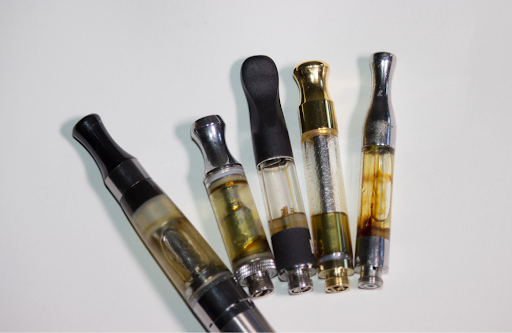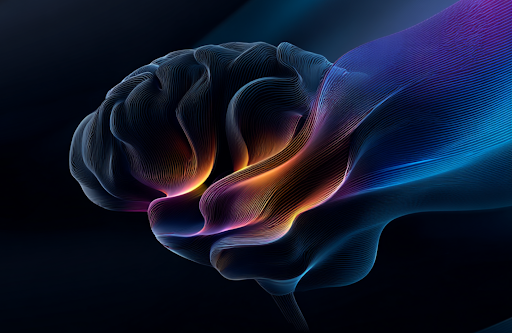DMT is known for producing short, powerful psychedelic experiences, but new research suggests its potential goes far beyond the trip. Scientists are now exploring how low, non-hallucinogenic doses of DMT could help heal the brain after a stroke. In this post, we’ll break down what the latest study found, what it means for the future of psychedelic medicine, and how harm reduction plays a role in understanding DMT safely.
What New DMT Research Reveals About Brain Healing
A groundbreaking new study suggests that DMT, a powerful psychedelic best known for its intense, short-lived effects, could one day help people recover from strokes. Researchers found that small, non-hallucinogenic doses of DMT reduced brain inflammation, protected neurons, and helped repair the blood–brain barrier in animal models.
The study adds to a growing body of evidence that psychedelics may play a role in neuroregeneration—the process of healing and rewiring the brain. For a substance long associated with otherworldly visions and underground use, this finding represents a remarkable shift in how science views DMT’s potential.
What the Study Found
In the latest preclinical trial,
researchers administered microdoses of DMT (N,N-Dimethyltryptamine) to rodents after inducing ischemic stroke. The results were striking: inflammation markers decreased, neurons survived longer, and recovery times improved compared to the control group.
DMT appeared to act on sigma-1 receptors, which regulate inflammation and protect cells under stress. These receptors may be the key to how DMT helps the brain heal without producing the intense hallucinogenic experience it’s best known for.
If future human trials replicate these effects, DMT could become one of the most promising tools in post-stroke recovery and one of the first psychedelics used as a neuroprotective medication.
From Psychedelic Experience to Medical Breakthrough
This research adds to a growing shift in how society perceives psychedelics. Once dismissed as dangerous or purely recreational, compounds like
DMT,
LSD, and
psilocybin are now being explored for their therapeutic potential.
It’s important to note, though, that this study used a pharmaceutical formulation of DMT in a clinical setting, not the same substance people encounter on the street or in DMT vape pens. Medical-grade DMT is produced under sterile conditions and precisely measured, while black-market versions can vary wildly in purity and potency.
That’s why harm reduction remains essential. Whether someone is curious about DMT for personal exploration or following these scientific breakthroughs, understanding what’s actually in your substance is the first step toward safety.

DMT Carts, Pens, and the Rise of Unverified Products
Over the past few years, interest in DMT carts and DMT vape pens has exploded online. These products are often sold or shared as “ready-to-use” vapes, but in reality, they’re some of the most misrepresented and risky psychedelic products on the market.
Many DMT carts are diluted with unknown chemicals or mislabeled entirely. Some contain no DMT at all; others may include dangerous additives like synthetic tryptamines, cutting agents, or residual solvents.
Without proper testing, there’s no way to know what’s inside.
Where to Get DMT Test Kits You Can Trust
We’re proud to stand with both the harm reduction and scientific communities. Everyone’s path toward safety and understanding looks different, and our mission is to make sure every step is informed and transparent.
If you’re testing DMT in its crystal or powder form, the
DMT Spot Kit package at BunkPolice.com is your best option. It includes the essential reagents for identifying DMT and spotting potential adulterants, giving you clarity and confidence before you ever inhale or ingest.
However, if you’re testing DMT vape juice, the process is quite different. You’ll want to use the
LSD Spot Kit package instead, since the composition of vape liquid requires different reagents for accurate results.
To make this easier, check out our detailed blog guides:
Together, these resources break down exactly how to handle each form safely and effectively.

How Long Does DMT Last?
In clinical settings, DMT’s effects are short-lived, typically lasting between 5 and 20 minutes when smoked or vaporized, or up to 30–45 minutes when injected or administered intravenously.
Researchers exploring its therapeutic potential are using sub-hallucinogenic doses, far below the levels used recreationally. These doses don’t produce intense visuals or distortions, but instead appear to activate neuroprotective pathways that could aid healing.
The takeaway? DMT’s duration doesn’t define its potential. Even in small amounts, its impact on the brain could be profound.
The Bigger Picture: Harm Reduction and Scientific Progress
Psychedelic medicine is rapidly evolving. While this DMT study shows incredible promise, it’s not an invitation to self-experiment, especially with unverified products like DMT pens or DMT carts.
Science is exploring DMT’s healing properties in controlled, pharmaceutical environments. Outside of that, safety starts with testing. Whether you’re working with DMT, LSD, or any other psychedelic,
reagent testing and
verified lab analysis remain the gold standard for knowing what’s real.
At The Bunk Police, we believe that harm reduction and research go hand-in-hand. The more we understand these compounds, from their chemistry to their clinical applications, the safer and more informed our communities become.




